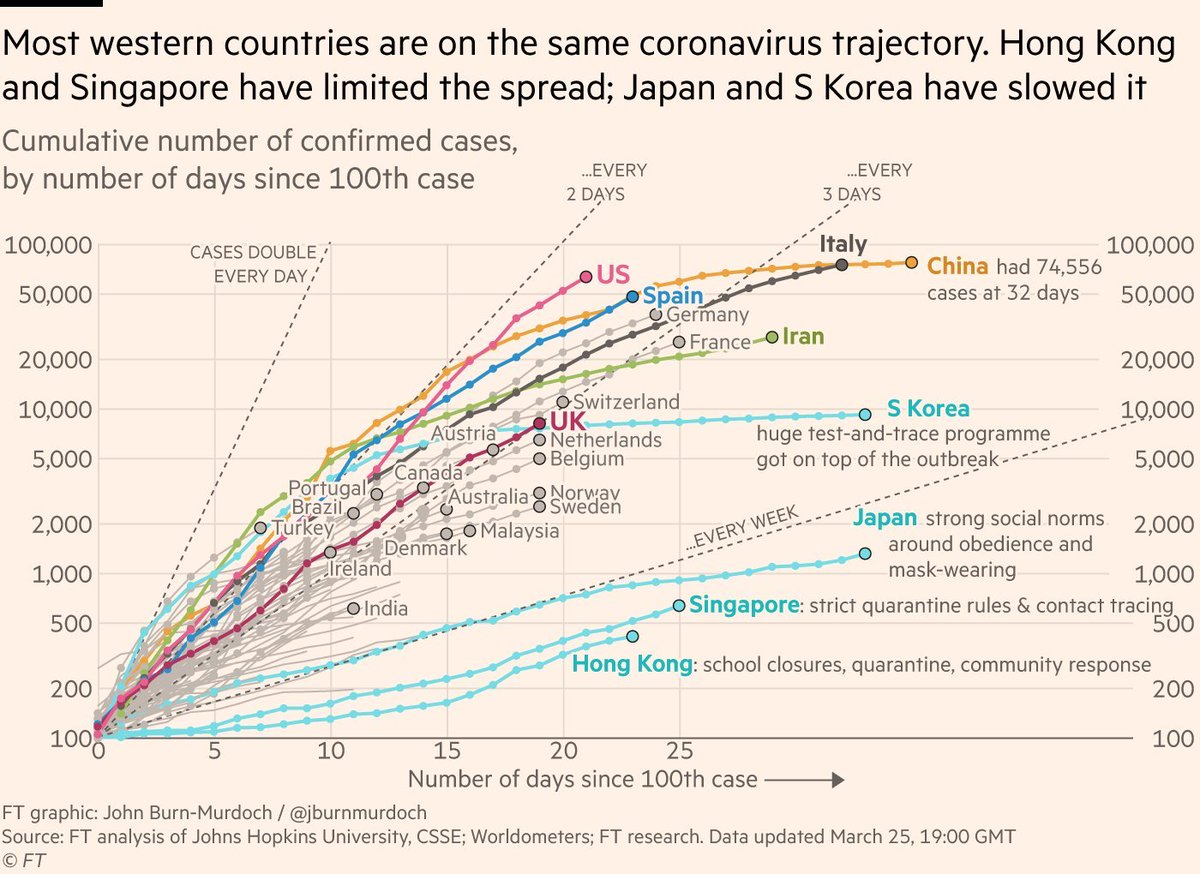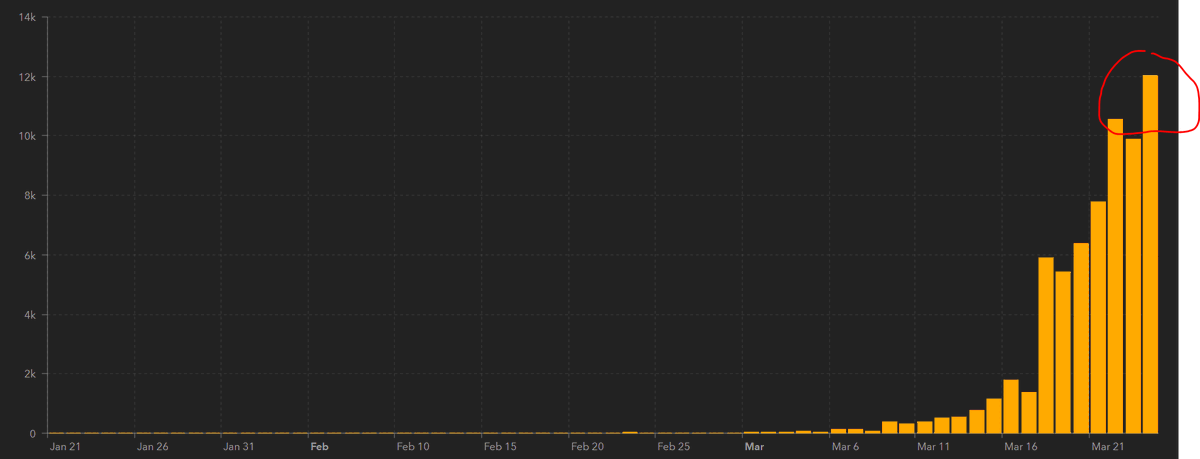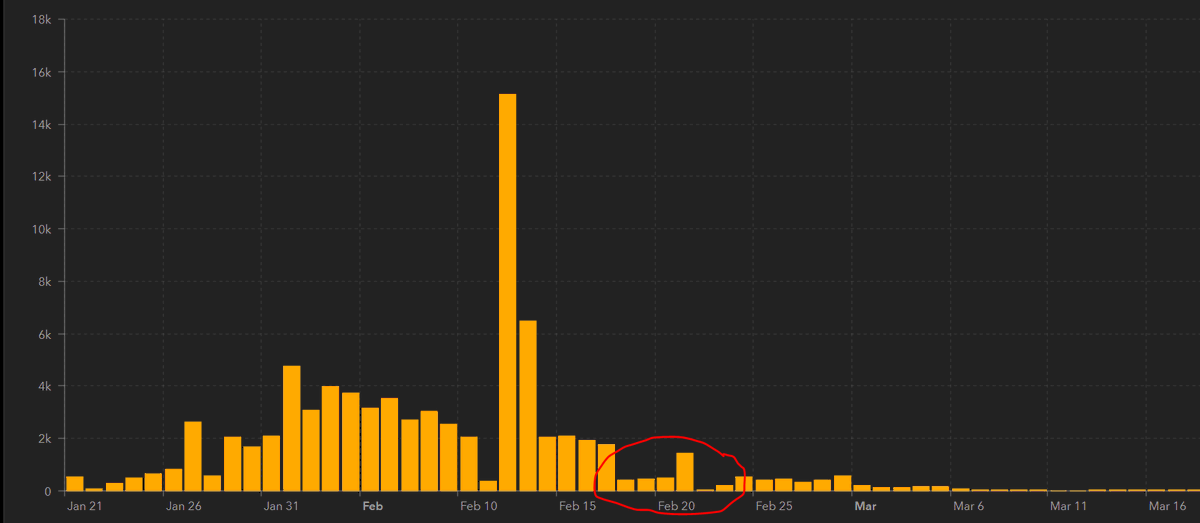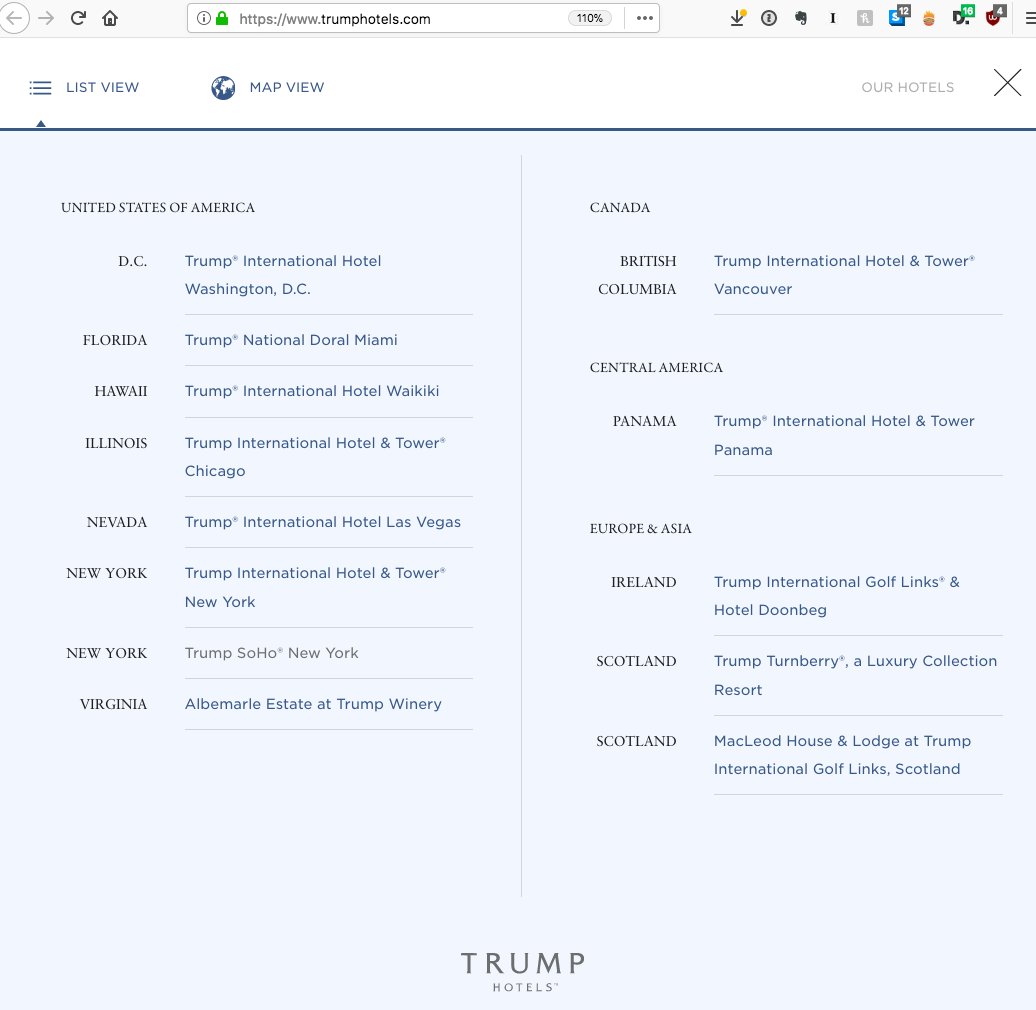No question we need to restore economic activity and human mobility ASAP. But there's a right way to do it and a super-wrong way to do it.
The President's comments frighteningly suggest he is leaning toward the super-wrong way. washingtonpost.com/politics/trump…
But if we un-pause prematurely, we lose many lives and overwhelm hospitals. That's a huge problem too.
So lifting those measures before we are ready just puts us back at square one.
Easing off the brakes too early just guarantees more US cities reaching that same point.
If our ERs are crashing due to a wave of COVID19, *everyone* suffers.
And if our health system crashes, it ain't exactly good for the economy. So the real choice is:
- economic pain
*or*
- economic pain + a lot of death
I see several priorities:
For now in the US, this is *only* possible through a version of what China did, and what Italy is doing: a sledgehammer approach of prolonged, painful social distancing measures.
So what we're seeing currently is only the front edge of the wave that is about to hit our hospitals.
A pause of only a few weeks will not be enough to bring transmission back down to manageable levels.
We would at best tread water at the (very bad) level we're at now, and soon face another wave.
Must pair this with huge scale-up of contact tracing (core epi tactic of ID'ing & monitoring every contact of a confirmed case). This is really hard to take to scale.
Adapting this to the US is a huge innovation challenge: building big-data tools for contact tracing, but consistent with our own laws and values. Tough, but do-able.
Will not be cheap, but far cheaper than pausing the economy.
These measures,surveillance, testing, and rapid targeted quarantine and isolation, build one line of defense.
Surging add'l protection & support to high risk groups, so that elder-care homes, prisons, detention centers, shelters, etc do not become incubators of transmission. (Another case for Americorps-for-public-health)
-Separate screening and intake for COVID from normal ER functions; perhaps even at distinct central facilities (China has done this).
And bolster capacity of health systems across the country to handle future surges in cases.
- Breakthrough on big-data public health tools
- On-demand testing
- Surge in public health workforce
- Strengthen disease surveillance
- Targeted quarantine/isolation
- Ramp up production of PPE and other items
- Surge in health system readiness
This is what China has put in place; it's what S. Korea put in place. It's our modern-day Manhattan Project.
But it's not where the focus seems to be for the White House. And that's a huge problem.


















